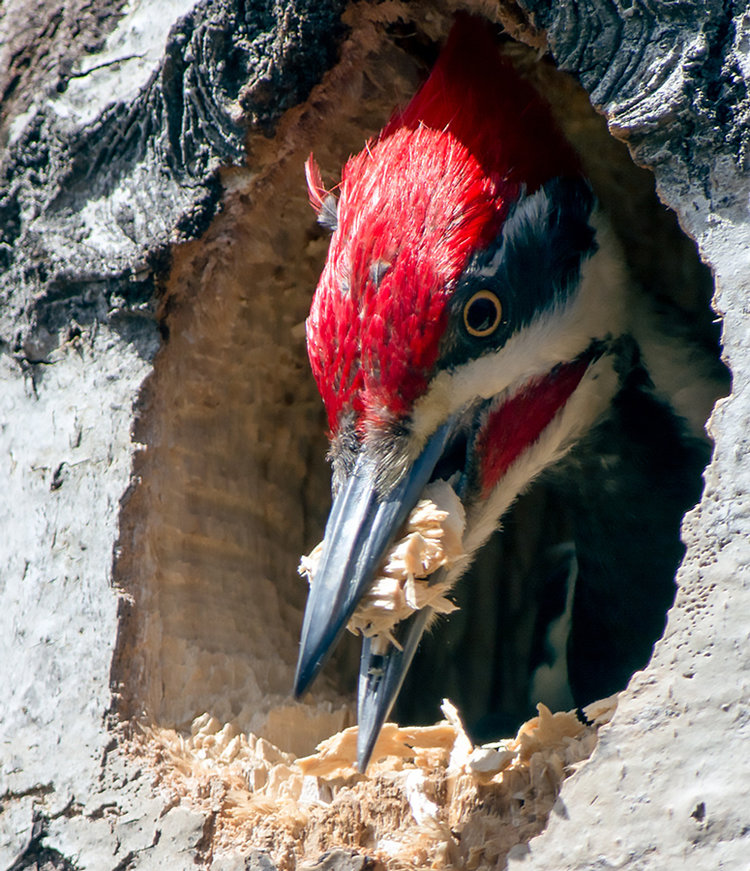From March 18, 2019 to August 8, 2019, the Carty Unit at Ridgefield National Wildlife Refuge underwent a process known as an “oak release.” This involved removing faster growing conifer trees, mainly Douglas fir, in order to create more ideal growing conditions for Oregon white oak trees.
Now that the fir trees are down and removed from the site (off to support other conservation projects), the project’s focus shifts to trail improvements, invasive species management, and the restoration of native plant populations.
A partnership with Washington Trails Association (WTA) has been instrumental in establishing a “primative” version of the Oaks-to-Wetlands Trail, which was due for re-imagining following years of being a criss-crossing, confusing trail system. Planning efforts are underway for the continual improvement of the trail, which will likely one day include viewing platforms and interpretive installations.
Restoration work throughout the Carty oak woodlands is an ongoing process. Going forward, we are planting native grasses and removing invasive plants like blackberry, mullein, Canada thistle, and shiny geranium. This effort will continue through the next couple of years until the native shrub community (Indian plum, snowberry, common elderberry, Nootka rose, and oak saplings) becomes well established.
Latest Update
SPECIAL FEATURE: “Oak Restoration On Track” February 2, 2020; The Columbian
“The Messy Business of Oak Woodland Restoration” September 7, 2019
Key Dates
August 9th, 2019: The Oaks-to-Wetlands trail re-opened as a “primitive trail,” meaning it is an early version of the trail that is usable by the public and will be continually improved as this project continues into the future.
March 18, 2019 to August 9th, 2019: The Oaks-to-Wetlands Trail was closed north of the Oak Overlook (the end of the paved portion of the trail) for approximately six weeks during tree cutting. The trail remained closed for several more weeks as the trees were carefully removed from the site and Refuge staff ensured the site was free of falling debris. For most of the month of July and early August, Washington Trails Association and the Refuge’s Youth Conservation Corps crew rebuilt the Oaks-to-Wetlands Trail and prepared it for public access.
Why improve conditions for oak trees?
The Oregon white oak was once a dominant species in Southwest Washington and Oregon’s Willamette Valley, providing high quality nesting and food resources for hundreds of bird, mammal, and insect species. These trees, however, are much slower growing than trees favored for timber production, like the Douglas fir. Since European arrival in the Pacific Northwest over 150 years ago, the Oregon white oak has lost over 97% of its historic habitat.
From One Restoration Project to Another
Douglas fir trees may be on the way out for this Refuge restoration project, but they’ll find new life helping improve the in-stream and riparian conditions of Abernathy Creek, located just west of Longview, Washington. The Cowlitz Indian Tribe has led efforts to restore salmon and steelhead habitat in Abernathy Creek since 2012. The Douglas firs from the oak restoration project on the Carty Unit will be used to finish out the Abernathy Headwaters project and will likely be used in the Sarah Creek and Erick Creek projects (both tributaries to Abernathy Creek).
The Refuge’s Douglas fir trees are ideal for this project because mature firs are hard to find for this purpose and large trees will last a lot longer in a stream environment. Also, their size will keep them more stable without the need for cables or boulder ballasts. Trees from the Refuge will also bring down project costs.
visitor Impact
Now that a “primitive” version of the Oaks-to-Wetlands Trail has re-opened, the visual experience is quite different than before the Oak Release project began. The area is filled with tree stumps and natural debris piles as Friends and Refuge staff and volunteers work to remove invasive species and plant a beneficial native vegetation understory.
Check back to Refuge2020.info and the Ridgefield NWR website for specific closure dates and other project updates.
